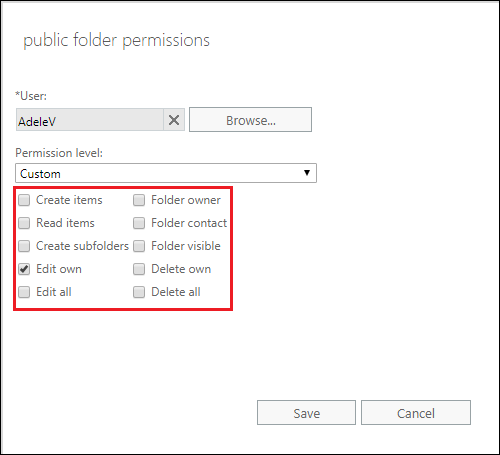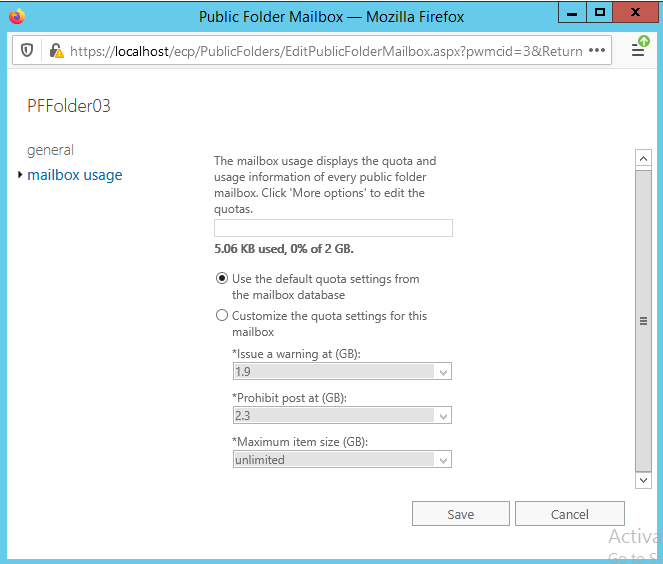

Setup Public Folders in Exchange Server 2013 In this post, I will show steps to setup public folders in Exchange Server 2013. Public Folders have always been a collaboration tool in Exchange environment. You can also mail enable the public folder and send emails to public folder SMTP address. But for now, public folders feature can be accessed by Office Outlook 2007 or later, no OWA (Outlook Web Access). But in Exchange 2013, it’s nice and simple. High availability of public folders in earlier versions of Exchange was a different story. The database that stores public folder mailbox can take part in DAG (Database Availability Group) and provide high availability for public folders. This mailbox is stored in Exchange database where other mailboxes are also stored. Folder hierarchy and contents are stored in this public folder mailbox. Unlike earlier versions of Exchange, Public Folders in Exchange 2013 are now stored in mailbox called public folder mailbox. No NuGet packages or anything requiring an Internet connection are allowed.The changes made in Public Folder architecture is one of the major changes made in Exchange Server 2013. Oh and one thing: Everything has to run on PowerShell 4.0 on Windows Server 2012 R2 and the PowerShell script will be running locally. Other solutions I found only work based on direct user permissions but do not check group permissions. On another note: Does this really have to be that complicated?

I believe I'm pretty close, but I just can't get it to work. This however just prints SIDs, while (Get-Acl ).Access | ftĭisplays some human friendly output like "NT SERVICE\TrustedInstaller" and such. NET): (New-Object -ArgumentList | select Value I found the command whoami /groups, that prints all groups, but only for the currently logged in user.Īfter quite some additional time I figured out the command (based on. I assumed, that the groups outputted by Get-Acl are local ones, while the other ones were AD-sided groups. I collect the group Information using the command Get-ADPrincipalGroupMembership "" | select nameīut found out, that this features an entirely different set of group names. So my idea was to just match the output of (Get-Acl ).Access | ftĪgainst the group membership of the user. Most likely the user is member of some group, that indirectly grants it permissions. I understand, that Get-Acl Cmdlet is used to read folder permissions. However I've been googling like 5 hours by now to no avail. And this unrelated to having them granted directly by user name or indirectly by some group membership.

I want to check whether a given Active Directory user (specified by username and domain) has read/(write) permissions on a given folder.


 0 kommentar(er)
0 kommentar(er)
